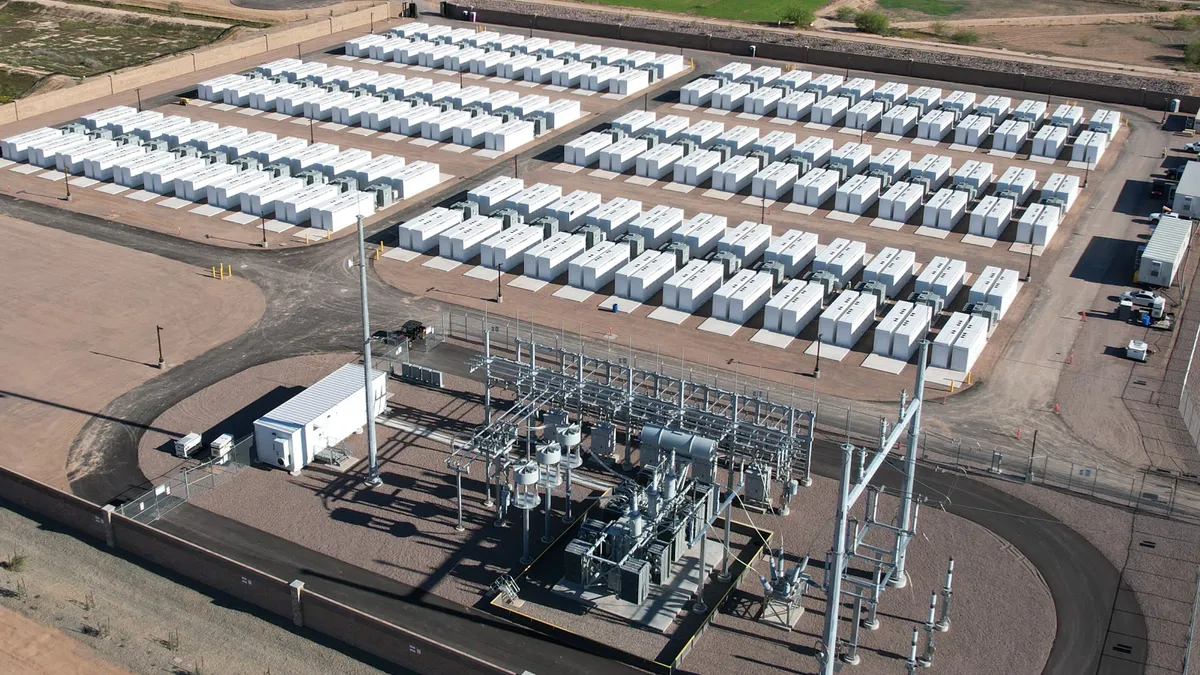Corporate investment in energy storage nearly hit $660 million in the third quarter, a five-fold increase from third quarter 2015, according to the latest U.S. Energy Storage Monitor from GTM Research and the Energy Storage Association.
The all-time high mark in investments is an indication that more and more companies are entering the energy storage space. “More players are coming into the sector, and there more are on the horizon,” Matt Roberts, executive director of the Energy Storage Association, said.
In the first three quarter of the year, there was a total of $812 million of corporate investment in energy storage, according to the report. That far outstrips the $416 million for all of 2015. To date, the 2016 total includes $167 million of venture capital funding and $645 million in project financing.
The increase represents a 20% year-over-year rise and reflects a maturing of the industry as it evolves away from early stage venture capital funding, Roberts said. “It shows that there are more viable places to put projects.”
Storage companies such as Stem and Advanced Microgrid Solutions have been ramping up their project finance capabilities. In August, Stem secured $100 million in financing from Starwood Energy Group Global. CEO John Carrington said he plans to use the funds to support project finance deals. In a project finance structure, each project is set up as a special purpose entity that is solely responsible for repaying loans without recourse to the corporate parent, usually the development company.
In July, Advanced Microgrid Solutions signed a deal with Macquarie Capital for the capital to jointly develop and construct a $200 million fleet of the energy storage projects. CEO Susan Kennedy describes AMS as a development company that tailors solutions for customers more than a storage company that installs batteries.
The largest deal of the quarter, however, was a $300 million loan program announced by Tabuchi America and the Electric & Gas Industries Association in September. The funds will be used for a 20-year loan program and lease option for residential solar-plus-storage installations.
Merger and acquisition activity was also included in the tally and was boosted by Total’s acquisition of Saft in July 2016. But theTesla-SolarCity merger was announced in the third quarter but was not approved until November, so it will contribute to next quarter’s numbers.
Contributions from projects that have either just secured financing or are looking for financing will also be paid forward, as several utility scale projects begin to enter service. A lack of front-of-meter projects larger than 1 MW resulted in a steep decline in deployments during the quarter.
Total storage deployments dropped 75% to 16.4 MW in the quarter, from 65.4 MW in third quarter 2015. Almost all of that decline was in the front-of-meter segment. There were only 2.3 MW of font-of-meter deployments this quarter compared with 51.4 MW in third-quarter 2015. Behind-the-meter deployments were almost flat at 14.1 MW compared with 14 MW in third quarter 2015.
The decline, though, is “not indicative of a trend, but cyclical, a reflection of when projects are delivered,” said Roberts. It's also a function of the relatively small scale of the market.
“As the number of utility deployments in any given quarter are still in single digits, system size of each project matters a lot and adds to steep dips and spikes in quarterly deployments,” Ravi Manghani, director of energy storage at GTM, said, adding that the effect will show the reverse result this quarter.
Looking ahead
GTM Research expects a strong finish for 2016. Several large utility-scale projects are expected online before year end. Southern California Edison and San Diego Gas & Electric have contracted for 84.5 MW of storage to make up for the generation put out of service by the Aliso Canyon natural gas leaks. The third quarter report sees the U.S. annual energy storage market growing to 260 MW in 2016, up from 226 MW in 2015.
Roberts also noted two other trends occurring within that trajectory. Even as more megawatts are installed, they are throwing off less revenue, he said. “Prices are dropping so fast that net value is going down.”
Additionally in terms of megawatt hours, a measure of usage, the market is growing even more quickly than the megawatt market, which measures capacity. Measured in megawatt hours, GTM projects energy storage will grow by more than 284% by the end of the year. The market for longer duration storage is starting to change, said Roberts. As more projects that require longer duration come into the market it is reshaping how storage installations are designed, he said.
That shift is most notable in California, which has so far led the nation in adapting regulations and market design to accommodate energy storage projects. Notable examples include legislation such as AB 33, which directs state regulators to examine energy storage for renewable integration, and mandates to include storage in the solicitations to make up for the loss of gas-fired generation as a result of the Aliso Canyon leak.
Other states, such as Massachusetts, are also looking at integrating storage into the state’s grid. As a result of its State of Charge report, Massachusetts is considering a storage mandate for as much as 600 MW. New York City has implemented the first city-wide energy storage mandate in the country, a 100 MWh target by 2020. And FERC in November held a conference to examine the role of storage as a grid asset.
Even with markets for storage opening in other states, GTM still expects California to dominate the market. 74% of utility scale storage projects are in the PJM Interconnection, many of them deployments for frequency regulation. But a moratorium on new PJM projects and the momentum of storage projects already under way will put California in front, the report said.
California also will continue to dominate the non-residential energy storage segment with 85% of the market, with more than 25 times the amount of deployments in PJM territory, and more than 30 times the deployments of New Jersey, the next largest single-state market, said GTM.
The authors of the report caution, however, that their outlook may be revised if the incoming Trump Administration “puts forward regressive policy measures in 2017.” But with most storage regulatory activities in state and regional markets, “the only scenario in which our forecast will be negatively affected is if renewable policies or initiatives such as the Grid Modernization Initiative or commitments announced at the White House Summit on Scaling Renewable Energy and Storage With Smart Markets are overturned.”






















